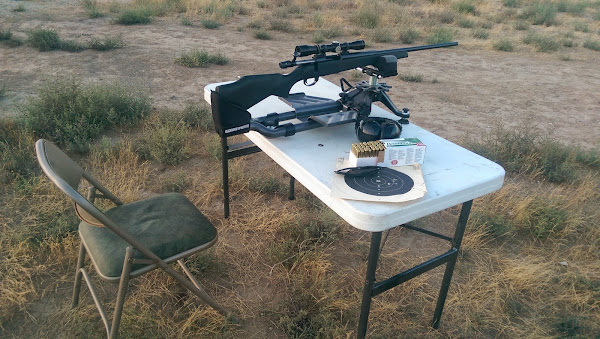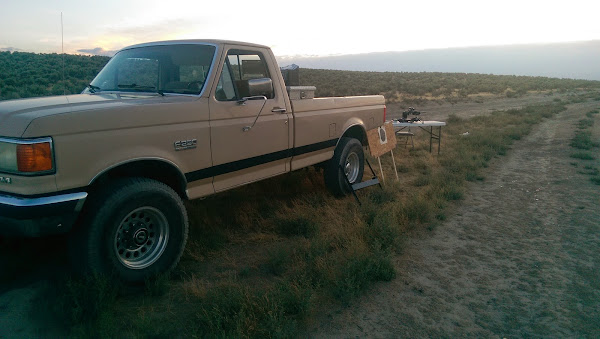Hi, as you might guess I'm new here. My goal is to shoot to shoot good groups at 1,000 yards. What is a good gun and scope to get? My budget is $450. What are some good guns that I can put a skin on like in Call of Duty : Black Ops?
Just kidding.
My name is Alex, I live in Boise, ID and have been shooting all my life, but have just recently taken more of an interest in it.
Hesitant to list my whole arsenal here online, but here is what I am shooting the most of these days:
*Remington 700 .270 ADL, I think. (no trap door.)
Nikon 12x scope. Not sure the model #, it was a $300 Walmart scope.
Boyds Thumbhole stock. Probably doesn't help grouping too much, but it's heavier, comfortable, and I like the look. This it sitting on the same stand I usually shoot with.

*Weatherby Vanguard .223
Old Leopold 9x Scope

The .223 was a Christmas gift this last year, and the one I am most excited about, mostly because the rounds are quite a bit cheaper, thus less guilt every trigger pull scattering my groupings. My theory anyways.
My theory anyways.
Here is my very first group at 100 with the .223. Pretty heavy wind that day, and about 20* out, so I think I might have a bit to improve right off the bat.
First 3 rounds (one I was finally on paper) are covered up, followed by the next 3 around the middle.

Next 6 after a little more dial tinkering.

Anyways, that is my intro. I started this thread to share my experiences and ask questions. To give you an idea of where I am going here are the next steps:
* Hand loading
* Improving bench setup
* Upgrade scope on .223 once my skill level is little enough of a factor that more gear is needed.
Thanks for tuning in!
Alex
Just kidding.
My name is Alex, I live in Boise, ID and have been shooting all my life, but have just recently taken more of an interest in it.
Hesitant to list my whole arsenal here online, but here is what I am shooting the most of these days:
*Remington 700 .270 ADL, I think. (no trap door.)
Nikon 12x scope. Not sure the model #, it was a $300 Walmart scope.
Boyds Thumbhole stock. Probably doesn't help grouping too much, but it's heavier, comfortable, and I like the look. This it sitting on the same stand I usually shoot with.

*Weatherby Vanguard .223
Old Leopold 9x Scope

The .223 was a Christmas gift this last year, and the one I am most excited about, mostly because the rounds are quite a bit cheaper, thus less guilt every trigger pull scattering my groupings.
Here is my very first group at 100 with the .223. Pretty heavy wind that day, and about 20* out, so I think I might have a bit to improve right off the bat.
First 3 rounds (one I was finally on paper) are covered up, followed by the next 3 around the middle.

Next 6 after a little more dial tinkering.

Anyways, that is my intro. I started this thread to share my experiences and ask questions. To give you an idea of where I am going here are the next steps:
* Hand loading
* Improving bench setup
* Upgrade scope on .223 once my skill level is little enough of a factor that more gear is needed.
Thanks for tuning in!
Alex
Last edited:







